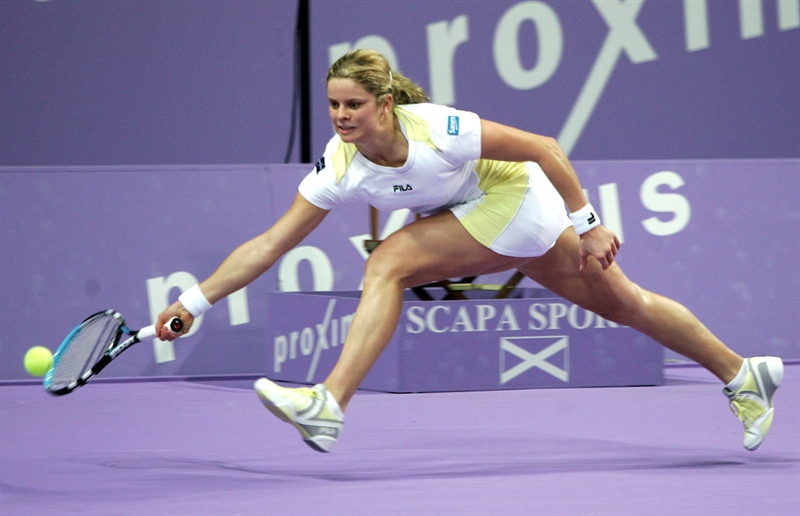You are viewing 1 of your 1 free articles
Driving a wedge between orthotics and illiotibial band strain

Illiotibial band syndrome (ITBS) is a common disorder amongst recreational and competitive runners. In fact, it ranks only behind patellofemoral pain syndrome in frequency(1). The iliotibial band (ITB), a tough band of connective tissue that runs from the hip to the lateral knee, serves as the attachment for the gluteus maximus and the tensor fascia lata (see figure 1).
Figure 1: Illiotibial band anatomy

The attachment site at the knee is where runners experience pain. Understandably, clinicians believe that the cause of that pain is the strain and strain rate of the ITB on the insertion site. Biomechanical factors associated with the hip (such as adduction and internal rotation) and the tibia (flexion, adduction, and internal rotation) place a greater strain on the ITB(1). Because ankle eversion is a common finding with tibial internal rotation, researchers at the University of Oregon wondered if manipulating ankle eversion might relieve the strain on the ITB(1).
The investigators enrolled 30 healthy recreational and competitive runners (divided equally between males and females) to undergo video motion analysis while running at a self-selected pace. The subjects performed running trials overground while wearing wedge orthoses under five different conditions in their preferred shoe. The orthotic variables ranged from:
- Seven degrees medial
- Three degrees medial
- No wedge
- Three degrees lateral
- Seven degrees lateral
Each subject performed five acceptable trials with each wedge. Computer and statistical analysis calculated kinematics, kinetics, and ITB strain. The wedge orthotics significantly changed the ankle eversion angles compared to no wedge. However, the strain and strain rates didn’t differ between conditions. Knee joint angles and internal tibial rotation remained the same under all wedge variables. Gender did impact strain and strain rate, with females demonstrating higher levels of both.
Practical implications
While the orthotics proved effective in changing the eversion angles, the kinetic chain anatomy didn’t change enough to relieve the strain on the ITB. The greater strain and strain rate in females corresponds to the greater incidence of ITBS in women(1). This study also found that women exhibited increased peak hip internal rotation compared to the men in the study, but not hip adduction. The authors suggest that decreasing hip internal rotation during running may impact the strain and strain rate. The external rotators lie deep to the gluteal muscles. Because the gluteus medius is in a line of pull with the ITB, weakness here is more often implicated in ITBS than the hip’s external rotators.This study’s limitations include the fact that the wedge orthoses were not customized, and the subjects were each wearing different shoes. However, because each orthotic variable made a significant change to ankle eversion compared to no orthotic, the shoes were likely not an issue. While the orthotics weren’t customized, they had the desired effect on the ankle. Therefore, using orthotics to change the ankle eversion angle doesn’t seem to benefit those with ITBS.
Reference
- JOSPT. 2019 Oct;49(10):743
Newsletter Sign Up
Subscriber Testimonials
Dr. Alexandra Fandetti-Robin, Back & Body Chiropractic
Elspeth Cowell MSCh DpodM SRCh HCPC reg
William Hunter, Nuffield Health
Newsletter Sign Up
Coaches Testimonials
Dr. Alexandra Fandetti-Robin, Back & Body Chiropractic
Elspeth Cowell MSCh DpodM SRCh HCPC reg
William Hunter, Nuffield Health
Be at the leading edge of sports injury management
Our international team of qualified experts (see above) spend hours poring over scores of technical journals and medical papers that even the most interested professionals don't have time to read.
For 17 years, we've helped hard-working physiotherapists and sports professionals like you, overwhelmed by the vast amount of new research, bring science to their treatment. Sports Injury Bulletin is the ideal resource for practitioners too busy to cull through all the monthly journals to find meaningful and applicable studies.
*includes 3 coaching manuals
Get Inspired
All the latest techniques and approaches
Sports Injury Bulletin brings together a worldwide panel of experts – including physiotherapists, doctors, researchers and sports scientists. Together we deliver everything you need to help your clients avoid – or recover as quickly as possible from – injuries.
We strip away the scientific jargon and deliver you easy-to-follow training exercises, nutrition tips, psychological strategies and recovery programmes and exercises in plain English.










